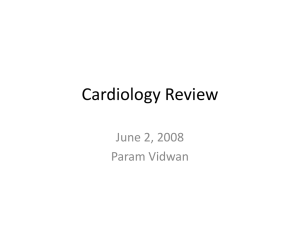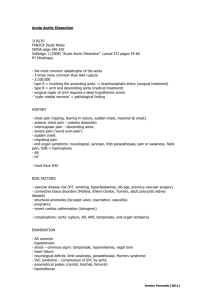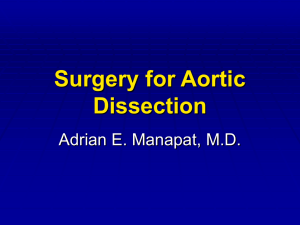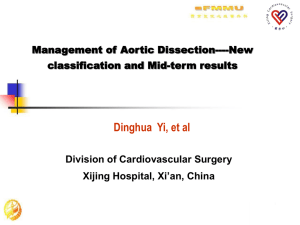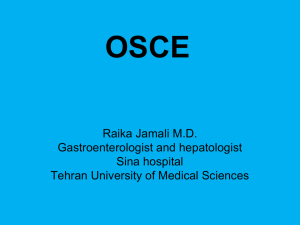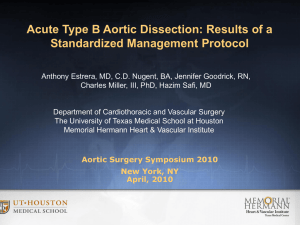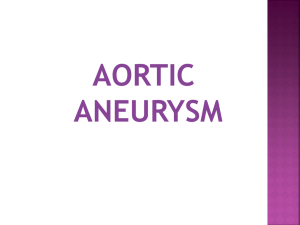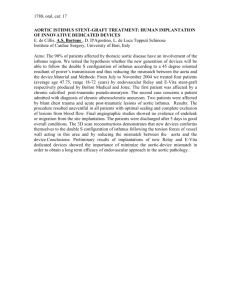Dissecting Aortic Aneurysms - Equal Opportunity Killer (12.26.10)
advertisement
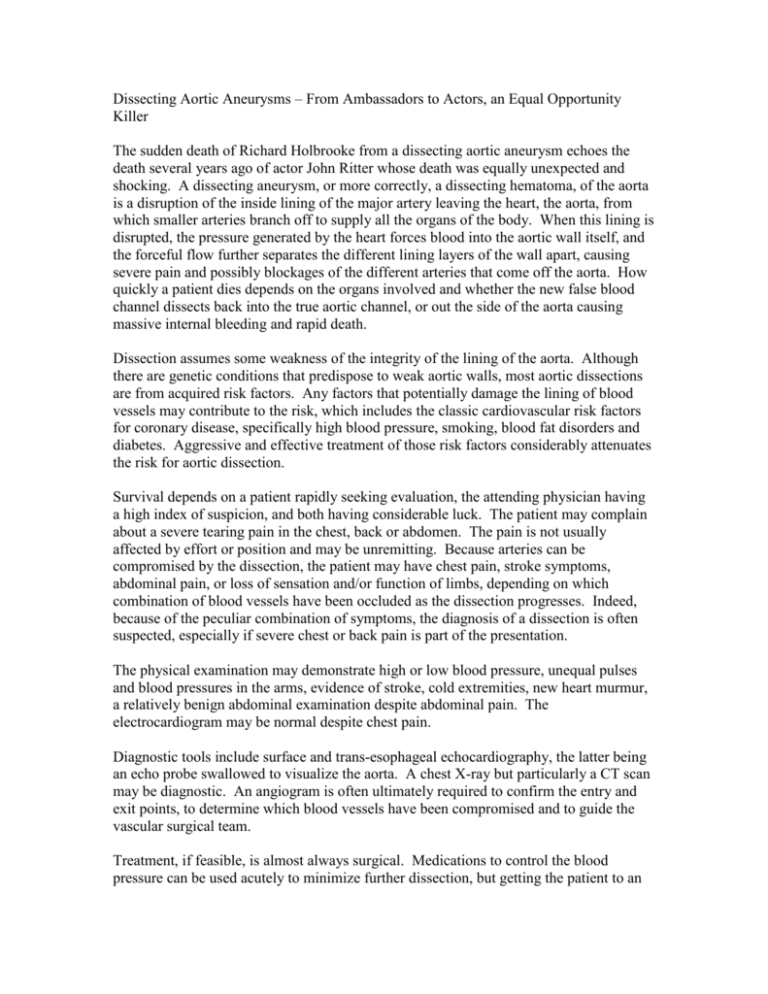
Dissecting Aortic Aneurysms – From Ambassadors to Actors, an Equal Opportunity Killer The sudden death of Richard Holbrooke from a dissecting aortic aneurysm echoes the death several years ago of actor John Ritter whose death was equally unexpected and shocking. A dissecting aneurysm, or more correctly, a dissecting hematoma, of the aorta is a disruption of the inside lining of the major artery leaving the heart, the aorta, from which smaller arteries branch off to supply all the organs of the body. When this lining is disrupted, the pressure generated by the heart forces blood into the aortic wall itself, and the forceful flow further separates the different lining layers of the wall apart, causing severe pain and possibly blockages of the different arteries that come off the aorta. How quickly a patient dies depends on the organs involved and whether the new false blood channel dissects back into the true aortic channel, or out the side of the aorta causing massive internal bleeding and rapid death. Dissection assumes some weakness of the integrity of the lining of the aorta. Although there are genetic conditions that predispose to weak aortic walls, most aortic dissections are from acquired risk factors. Any factors that potentially damage the lining of blood vessels may contribute to the risk, which includes the classic cardiovascular risk factors for coronary disease, specifically high blood pressure, smoking, blood fat disorders and diabetes. Aggressive and effective treatment of those risk factors considerably attenuates the risk for aortic dissection. Survival depends on a patient rapidly seeking evaluation, the attending physician having a high index of suspicion, and both having considerable luck. The patient may complain about a severe tearing pain in the chest, back or abdomen. The pain is not usually affected by effort or position and may be unremitting. Because arteries can be compromised by the dissection, the patient may have chest pain, stroke symptoms, abdominal pain, or loss of sensation and/or function of limbs, depending on which combination of blood vessels have been occluded as the dissection progresses. Indeed, because of the peculiar combination of symptoms, the diagnosis of a dissection is often suspected, especially if severe chest or back pain is part of the presentation. The physical examination may demonstrate high or low blood pressure, unequal pulses and blood pressures in the arms, evidence of stroke, cold extremities, new heart murmur, a relatively benign abdominal examination despite abdominal pain. The electrocardiogram may be normal despite chest pain. Diagnostic tools include surface and trans-esophageal echocardiography, the latter being an echo probe swallowed to visualize the aorta. A chest X-ray but particularly a CT scan may be diagnostic. An angiogram is often ultimately required to confirm the entry and exit points, to determine which blood vessels have been compromised and to guide the vascular surgical team. Treatment, if feasible, is almost always surgical. Medications to control the blood pressure can be used acutely to minimize further dissection, but getting the patient to an experienced vascular surgical team is a critical factor for survival. Aortic dissections can involve where the aorta leaves the heart or any and all of the aorta as it courses through the chest and down behind the abdominal cavity. So the surgery can be fairly straightforward or a multisystem catastrophe. That Mr. Holbrooke’s surgery took over twenty hours suggests that his was of the latter ilk. Moreover, the blood coagulation, neurologic, lung and kidney complications with prolonged surgery further blunt probabilities of a good recovery. The best strategy for dissecting aortic aneurysms is to identify and vigorously manage the cardiovascular risk factors that predispose a patient to develop this devastating disease process. Consulting your physician is the clearly the most important step. Irving Kent Loh MD FACC FAHA FCCP FACP Medical Director, Ventura Heart Institute in Thousand Oaks, CA Email: drloh@venturaheart.com www.venturaheart.com



